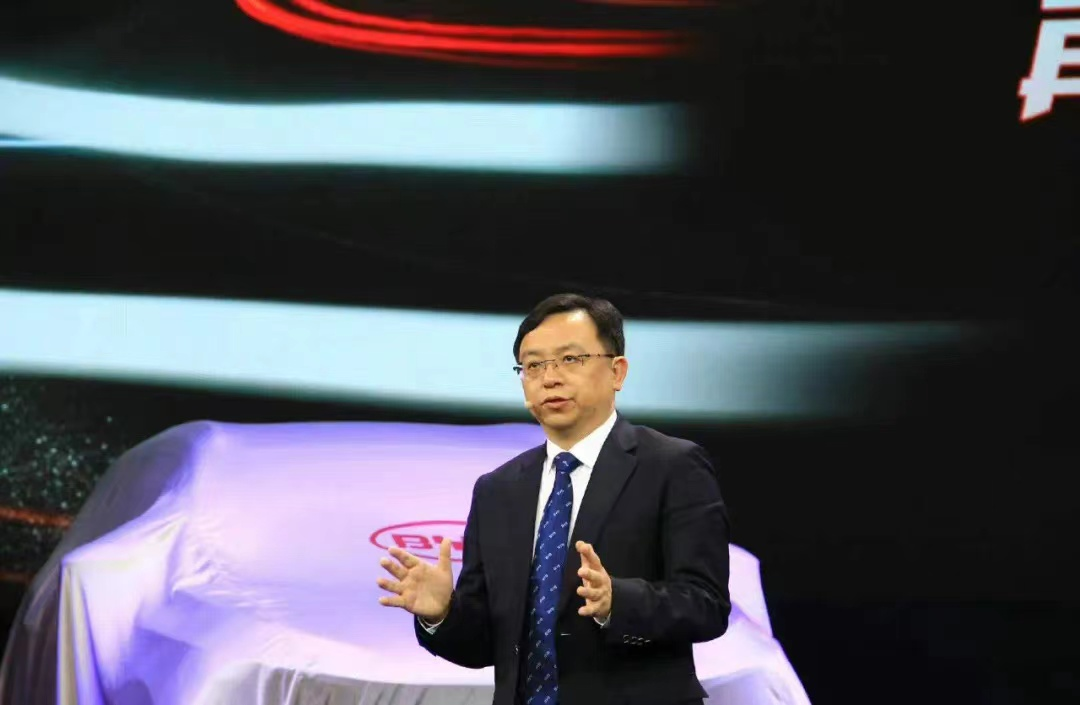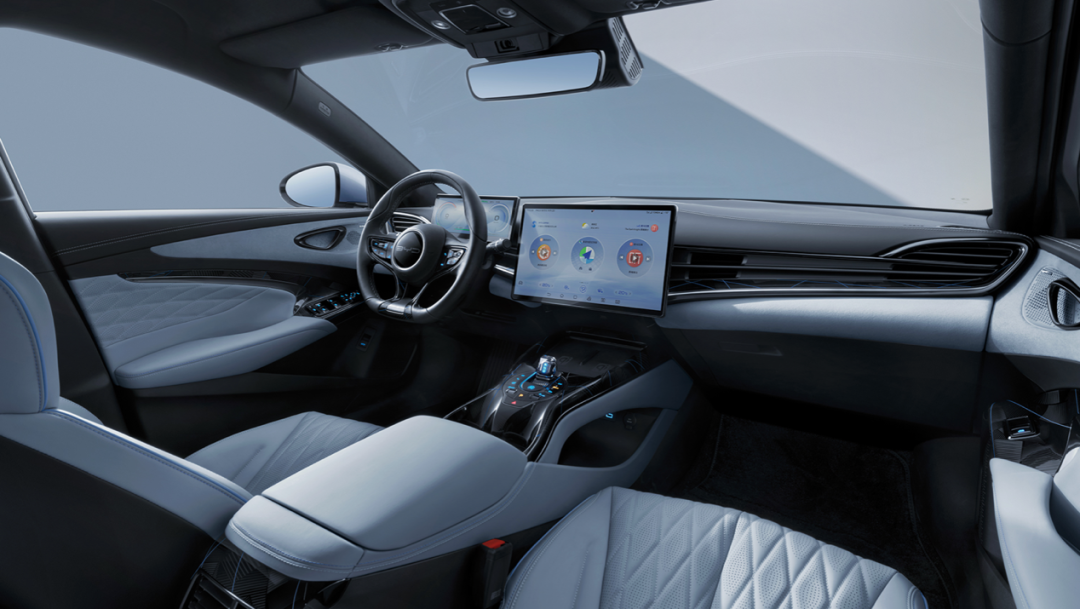Article|Financial Street Lao Li
Years ago, there was a popular saying, “Go your own way and let others talk”. Today’s BYD is going its own way, let others marvel. This is what Lao Li, a partner of Financial Street, said after listening to the share of BYD’s secretary Li Qian.
Although many researchers believe that Tesla’s price reduction will affect BYD’s stock price, quarterly reports exceeded expectations, monthly sales surpassed both North and South Volkswagen, and market share reached a new high again. The fact that the industrial chain layout is sound and reasonable makes the secondary market believe that BYD will be the most likely Chinese automaker to compete with Tesla for a long time in the future.
Although BYD’s momentum is strong, there are still many friends in the industry and the media who believe that BYD is still walking on one leg and still faces urgent problems such as voicelessness in intelligence, average profitability, and insufficient high-end brand. Today, Lao Li will share with you his perspective on BYD’s current one-legged walk and what the third quarter report of BYD means from the perspective of the secondary market. Why is Wang Chuanfu a strategist? How does the secondary market view the future of BYD?
What the financial report says, and what it doesn’t say
For listed companies, all the secrets of their operations are hidden in the financial report, and today, Lao Li will talk to you about BYD’s third-quarter financial report. Although financial reports are dull, they are genuine.
The day before yesterday, BYD released its third-quarter earnings forecast, which is expected to achieve a net profit of 9.1 billion yuan to 9.5 billion yuan in the first three quarters of 2022, a year-on-year increase of 2.7 times; and a non-net profit of 8.1 billion yuan to 8.8 billion yuan during the same period, a year-on-year increase of more than 8 times.

Among them, the net profit for the third quarter is expected to be between 5.5 billion yuan and 5.9 billion yuan. This data not only creates the best-ever single-quarter net profit performance in history but also exceeds the profit for the first half of 2022 (3.595 billion yuan) and the profit for the whole year of 2021 (3.045 billion yuan). The third quarter report exceeded both industry and secondary market expectations.
It should be noted that this set of financial reports not only includes the automotive sector but also other business sectors such as electronics. However, as the proportion of BYD’s automotive business continues to rise, it is optimistic that the automotive sector’s profit in the financial report should be over 4.5 billion yuan, and BYD’s sales volume in the third quarter was nearly 540,000 vehicles. Therefore, roughly estimated, BYD’s single-vehicle profit is close to the 10,000 yuan mark, which is not high compared to the traditional luxury fuel vehicle brands but is definitely a first-line level in the new energy field.
Many secondary market researchers believe that BYD’s strong third-quarter report was more reflected in terms of market share.According to the data from China Association of Automobile Manufacturers, the sales volume of new energy vehicles in the first three quarters of this year was 4.567 million units. BYD, which released sales data for the first three quarters, sold 1.185 million units, which means that BYD’s market share in the field of new energy vehicles has exceeded 25%. It’s worth noting that Tesla’s global sales in the first three quarters were only 900,000 units. Even if we include domestic gasoline car enterprises, BYD’s sales volume in the first three quarters is second only to FAW-Volkswagen and ahead of SAIC-Volkswagen.
Friends familiar with the auto market know that many car companies aim to break the threshold of selling 200,000 units in a single month during the peak season. According to the rule of annual car sales, if the monthly sales volume exceeds 200,000 in the peak season, the annual sales volume is expected to exceed 2 million. According to the development rule of global car companies, an annual sales volume of 2 million units is the “safety line” for a car company to survive in the long term.
Last month, BYD’s auto sales exceeded the 200,000 mark, with 94,900 units of pure electric models and 106,000 units of plug-in hybrid models. Both technology lines had very balanced sales. What I want to say is that in the auto industry, often times it is the insiders who see things clearly, while outsiders are left confused. Many friends see BYD in this way.
Five years ago, plug-in hybrids were the domain of SAIC and BYD, and sales were concentrated in core cities such as Shanghai and Shenzhen. Many friends said that plug-in hybrids were a transitional line, and Wang Chuanfu had repeatedly called on relevant departments to support the development of plug-in hybrid technology, but many industry insiders said it was wishful thinking. Five years later, BYD used DMi to slap everyone in the face, followed by hybrid products from Geely, Great Wall, and Changan.
Behind the monthly sales of 200,000 units is the Han family’s monthly sales exceeding 30,000 units, the Dolphin’s monthly sales approaching 25,000 units, and the Qin PLUS becoming the best-selling A-class sedan in China, breaking the monopoly of joint venture car companies for over a decade. Five years ago, only Geely’s Emgrand was on this sales list, and it was only at the bottom of the list.
Trust the strategist’s vision
Regarding BYD’s development, I have talked a lot with everyone about it through financial reports. Here, I want to discuss BYD’s intelligentization with everyone. Last year, I spent nearly a year looking at domestic intelligentization investments. From a strategic point of view, although BYD’s current level of intelligentization is not outstanding, it does not affect BYD’s overall performance, which is due to strategic deployment.
Many friends think that Wang Chuanfu is a technical entrepreneur, but I think that he is more of a strategist. From batteries to whole vehicles, and then going All in on new energy, Wang Chuanfu has demonstrated strategic determination. If we were Wang Chuanfu, we would most likely make different decisions, but they would be incorrect or not what is most needed right now.
Taking the complete cessation of production of fuel vehicles as an example, Li, an elderly businessman, thinks that most entrepreneurs or decision-makers would consider fuel vehicles to still be a large market and would not easily give up on them, or would develop them in parallel. After all, in 2020, the sales of BYD’s fuel vehicles still accounted for more than half of the total automobile sales, and Wang Chuanfu’s decision was to reduce the production of fuel vehicles in 2021 and stop producing them altogether in 2022, with all production capacity being invested in new energy vehicles.
The same principle applies to BYD’s development of electrification and intelligentization. Wang Chuanfu said, “The first half of new energy vehicles is electrification, and the second half is intelligentization. Like in the field of electrification, BYD will connect all core technologies and conduct full verification in the field of intelligentization.” Li believes that its strategic goal is to consolidate its leading position in the field of electrification during the immature stage of intelligentization and strategically follow the direction of intelligentization.
Everyone is very familiar with BYD’s leading position in electrification, but in terms of its layout for intelligentization, its strategy is: BYD basically keeps up with any intelligent function with mature user experience, but has limited maturity in functions with immature user experience.
In terms of intelligent cockpit, compared to the Qualcomm Snapdragon SA8155P chip used in mainstream cockpits, the BYD DiLink 4.0 platform uses the Qualcomm Snapdragon SM6350 chip and an 8GB RAM+128GB ROM hardware combination, which is not top-of-the-line, but belongs to the middle and upper level. The hardware level and software iteration ability of the intelligentization system are also average, but from the comparison of BYD’s previous vehicle models, we can clearly see its progress in this regard, and it is also moving towards the level of a luxury intelligent cockpit.

In terms of intelligent driving, BYD’s gap with other companies will be greater. Apart from the DiPilot assisted driving system, BYD has no other mature products, and even DiPilot, which was launched in 2020, has not been iterated since then. As a result, many people speculate that BYD, which is now in a high position but walking on one leg, may fall hard. And if we look at intelligent driving from a strategic perspective, how long will it take for fully autonomous driving to become popular?
The answer is not clear. At an internal research conference, BYD’s experts once asked Li in return, which high-end intelligent driving products are currently on the road? How many consumers would pay for autonomous driving?In this respect, BYD is not inactive either. In April of this year, BYD and Horizon Robotics reached a cooperation agreement to use the latter’s “Journey 5” autonomous driving chip in subsequent models to achieve higher-level intelligent driving functions. In July of this year, there was news that BYD was planning to independently develop an intelligent driving dedicated chip, and the project was led by BYD Semiconductor, which had issued requirements to design companies, and was also recruiting BSP technical teams.
We also consulted with relevant personnel from BYD, and they indicated that their plans in this area are still ongoing. Based on BYD’s strong foundation in the semiconductor field, its entry into the intelligent driving chip development field is not impossible. From the current perspective, BYD has achieved a breakthrough in the research and production of in-car IGBT chips, which has entered version 6.0, and its performance leads the world and marks a significant advancement for domestic chips.
Therefore, Lao Li believes that this is actually a strategic issue similar to the story of the Battle of Red Cliffs. When all car companies are relying on supplier capabilities to promote self-developed full-stack autonomous driving, BYD focuses on forming an advantage in electrification. When all car companies realize autonomous driving, it will not become a core barrier to BYD.
Looking at the secondary market, everyone understands quite clearly about intelligent driving. People believe that without sales, there is no performance, and no company can make money through software, including Tesla and XPeng Motors. This financing method, which was used to hoodwink primary market investors, cannot fool the pragmatic secondary market.
Many times, everyone is also wearing colored glasses. Currently, BYD’s level of intelligentization is indeed average, but the electrification and intelligentization of new forces like XPeng Motors are not outstanding, yet their sales are still considerable.
In Lao Li’s view, BYD will be one of the best targets in the entire new energy vehicle sector market over the next three years, as it exhibits a typical mainline logic. BYD has strong growth potential, industrial chain strength, and high market share. In terms of the upstream supply chain, BYD has deep deployment in raw materials and key components, and in the midstream, their self-produced abilities for their three-electric technologies are strong. Additionally, their grasp on the downstream terminal market has significantly improved.The upstream raw materials have been rising in price over the first half of the year and the price increase has been passed onto the downstream market. Many automobile companies have eased their cost pressures by raising prices. However, weaker companies’ market orders did not perform well following a price increase. BYD, on the other hand, became even more resilient as prices rose. In fact, most of their car models have seen price increases between 4000 yuan to 10,000 yuan, while orders continue to rise.
This reflects a change in brand positioning. Tesla is a typical company that has transitioned from a luxury brand to an economic brand. The most worrying thing for the secondary market is Tesla’s price reduction. After a Tesla price reduction, BYD is considered the most affected as BYD will sooner or later engage in direct confrontation with Tesla.
The supermarket experience store was invented by the new forces in the automotive industry to help enhance brand image. However, the operating costs of running a supermarket experience store are very high. Many new automakers can’t duplicate and propagate them or operate them for very long. But this year, BYD has swiftly developed supermarkets across many places since its establishment.
In the past, people didn’t consider BYD as a brand with good “face”; there were little differences between it and the other two private car companies. But now, many people believe that BYD’s brand image is slowly improving. Personally, Mr. Li also has realized that lots of officials in Beijing and Shenzhen are buying BYD cars. Although the number of cars is small, it represents a trend.
As NIO goes global and Tesla goes global, so does BYD. Starting July of this year, BYD has released a series of news about entering overseas markets successively. It is reported that BYD will enter Japan, Southeast Asia, Europe, and the United States in the next two years. What kind of situation BYD can create in overseas markets is not particularly important; what’s important is that only entering developed countries can mold a brand image.
Finally, Mr. Li will briefly share his predictions for BYD in the future. According to the seasonal law, many researchers believe that BYD’s sales will reach 800,000 vehicles in the fourth quarter. Calculated at a profit of 10,000 yuan per vehicle, BYD’s net profit will be about 8 billion yuan in the fourth quarter, and the full-year net profit will exceed 17 billion yuan. Next year, following market trends, BYD’s sales will most likely break through three million vehicles. Based on the unchanged net profit margin, a conservative estimate of the company’s net profit would be more than 30 billion yuan, and its market value will still be over a trillion yuan.
From a secondary market perspective, no matter whether you are a “Di-fan” or not, one thing is undeniable. After Ningde Times, a new giant is accelerating towards us.
This article is a translation by ChatGPT of a Chinese report from 42HOW. If you have any questions about it, please email bd@42how.com.
